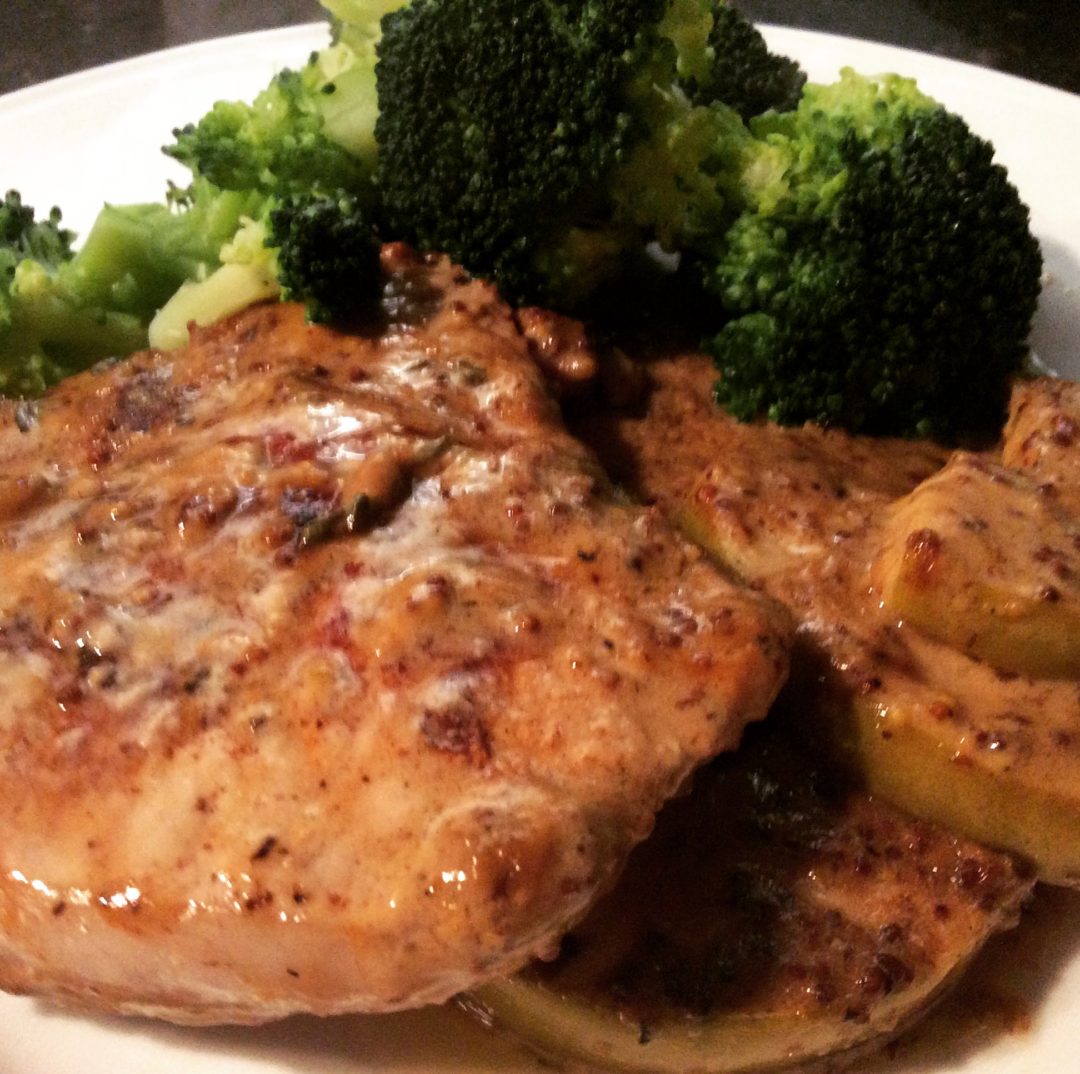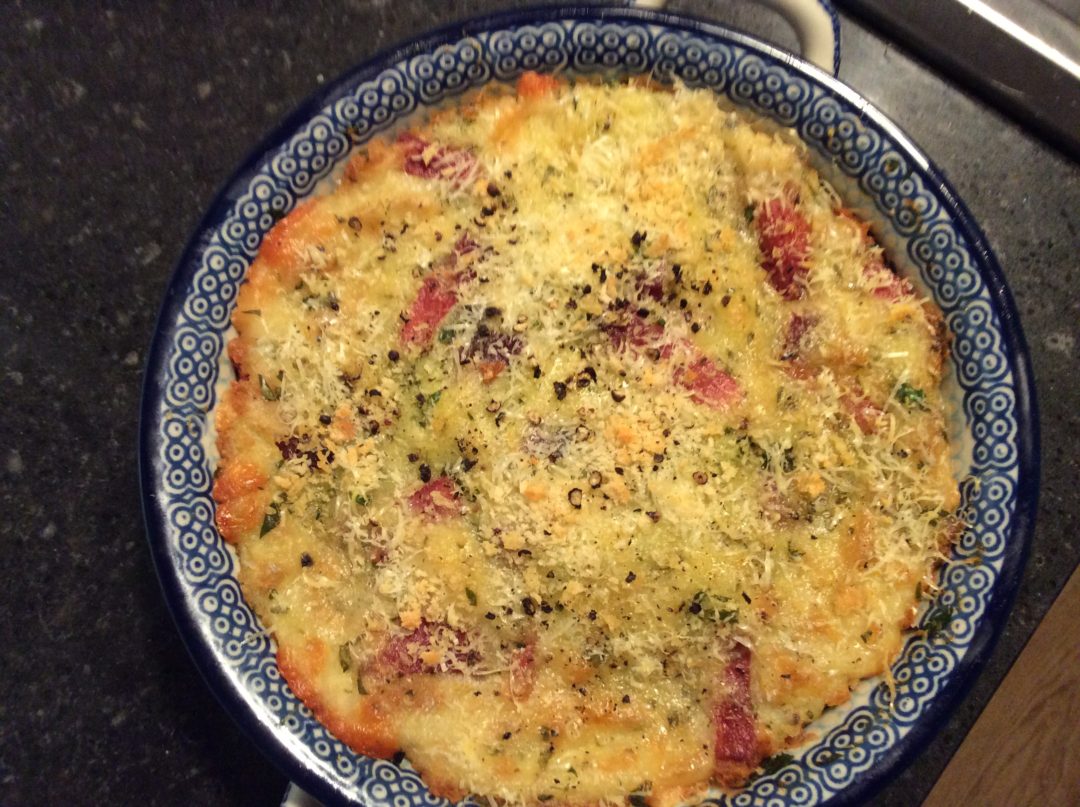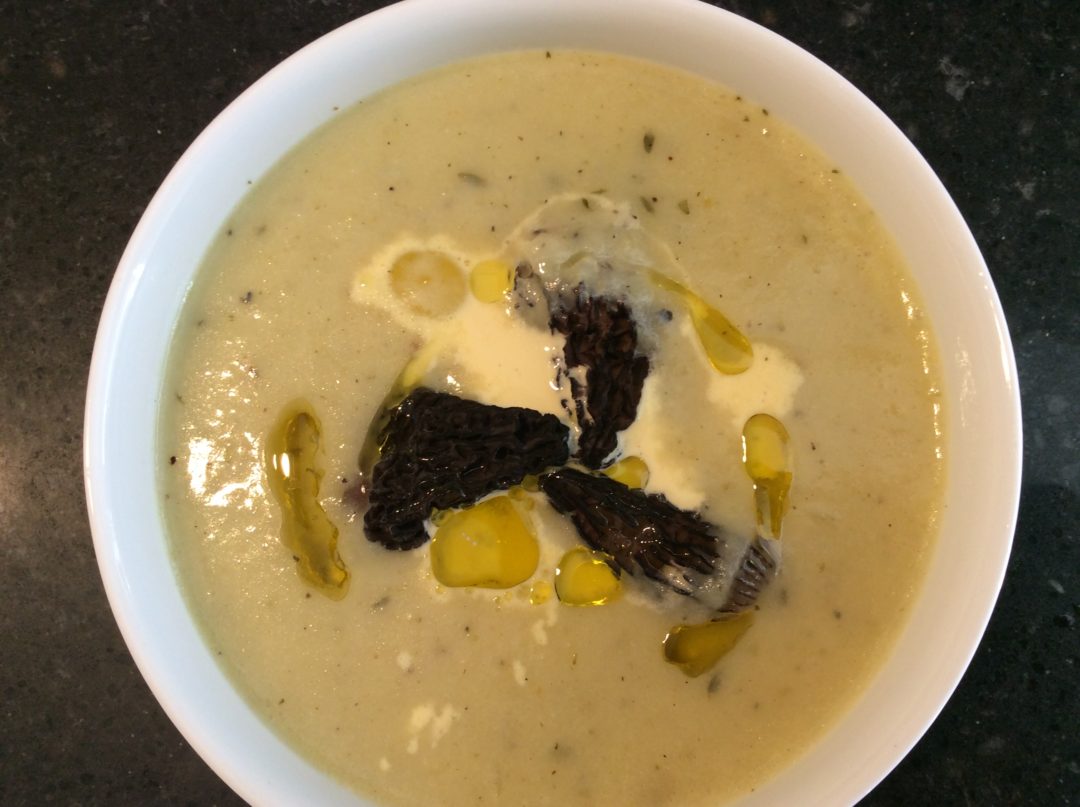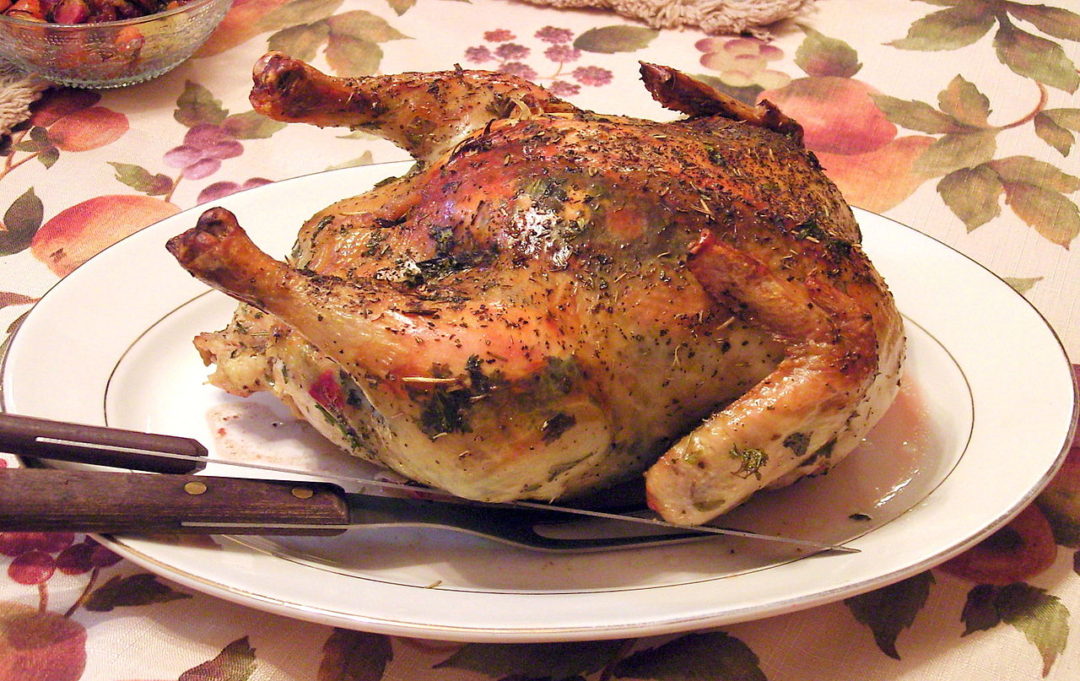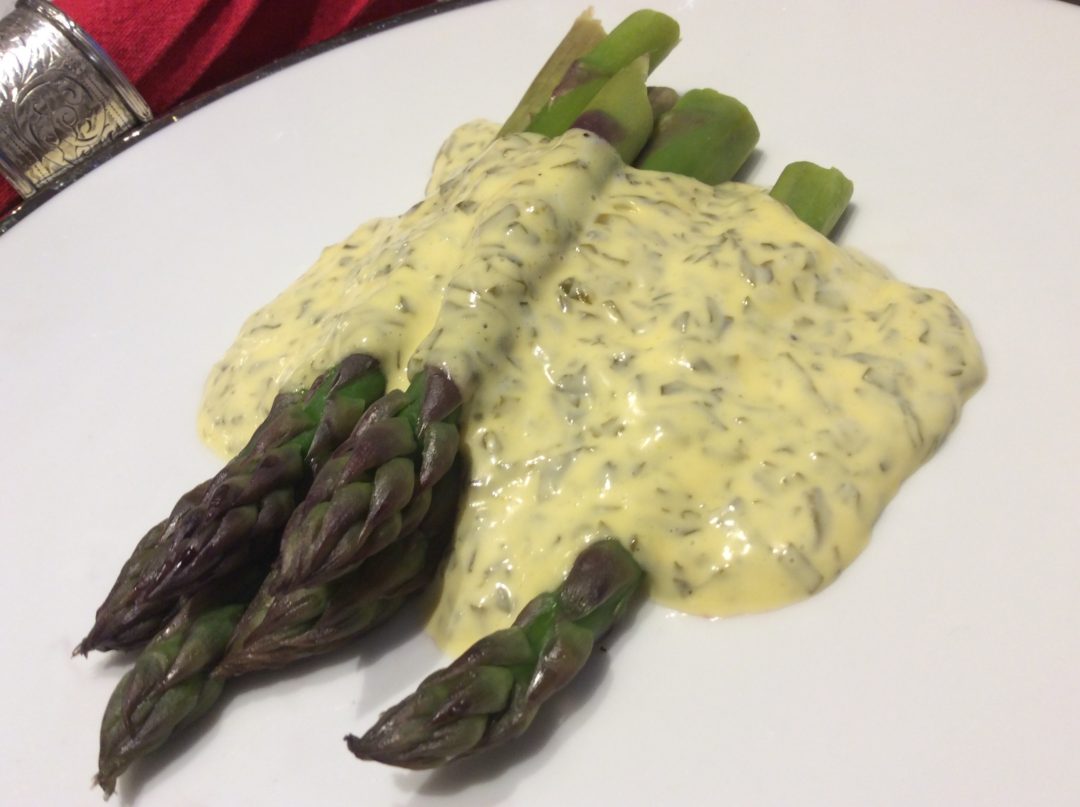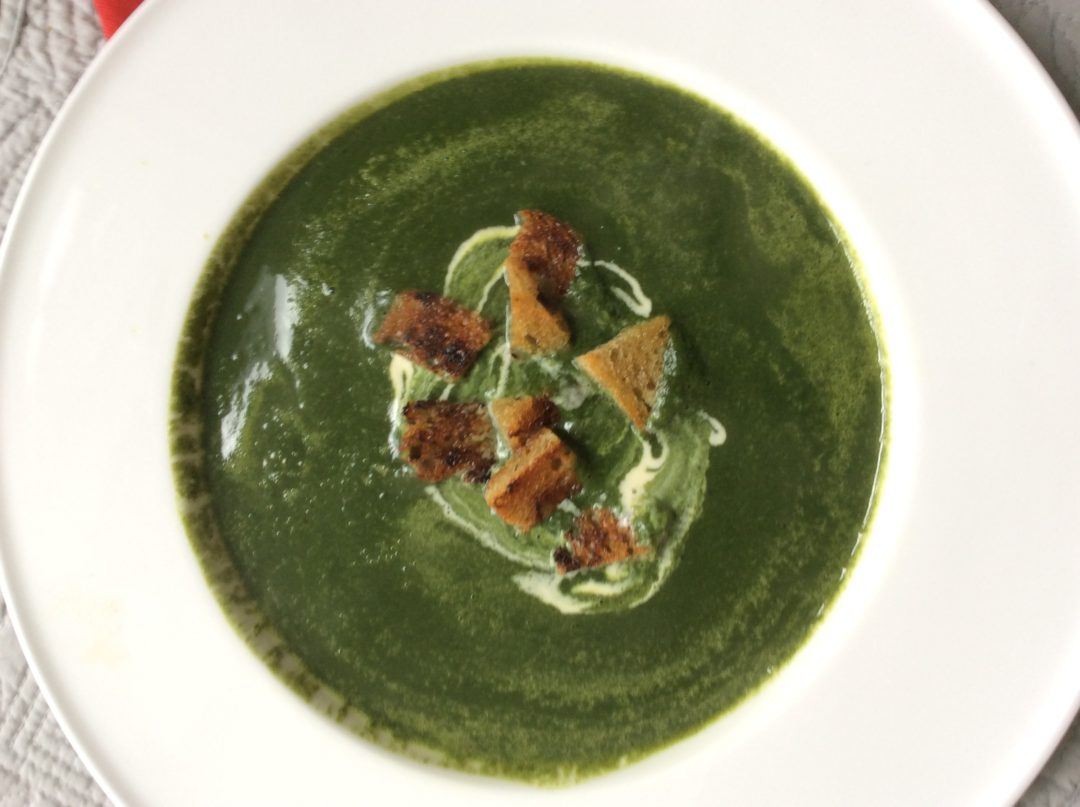As you know I am someone who tries to eat seasonally and reasonably locally, although I am not going to apologise for buying avocados or olive oil. Traditionally, pork has not been much of a spring meat, which I think is a shame as while the weather remains unpredictable during March and April, I think free range organic pork is a splendid choice.
Our local butcher recently had beautiful pork chops, with a fair layer of flavour – adding fat so I snaffled a couple. Once home, however, I then had the “what do I do with them” problem. Pork chops have flavour at the more delicate end of the range and frankly, can also be dry, if not cooked carefully. For that reason, I am not a fan of the plain grilled pork chop, so I consulted better cooks than I to decide how to get the best from them.
I have a quite a fair size cookery book collection which is something of a double edged sword when it comes to consulting them, as it can take so long to look through them. There is also the serious risk of becoming completely engrossed in a book I haven’t opened for a while and losing sight of my original need to look in the book in the first place! Anyway, my fingers hovered around Richard Olney’s three books that I have in the collection and I realised that I really haven’t paid him as much attention recently as I should have done.
For those of you who don’t know him, please may I take a moment to commend his writing to you, especially if you are partial to good wine, or at least reading about it. He was an American who, like many before him, fell in love with France and its attitude to food and wine. He lived in Paris during the 50s and 60s and writes evocatively about the arts scene of the time. He eventually settled permanently in Provence where he wrote most of his books. My favourite is “Reflexions” in which he is deliciously gossipy about many food names from the second half of the twentieth century. I no longer feel quite the same about Julia Childs but did have my view of Elizabeth David positively reinforced.
I found the inspiration I was looking for in Mr Olney’s “Simple French Food” and whilst I didn’t follow the recipe to the letter, I did like the method and most of all, the outcome. This is my take on the Olney recipe and I am very grateful for everything I have learned from reading his books.
PORK CHOPS WITH APPLE AND MUSTARD CREAM
Print RecipeIngredients
- 500g eating apples, preferably with a bit of tartness to them and a crisp texture
- 1 tbsp unsalted butter, plus more for greasing
- 2 free range organic pork chops, skin removed if present
- sea salt
- 150ml dry white wine (I used a Gavi of which I doubt Mr Olney would approve as he didn’t seem to be a fan of Italian wine)
- 4tbsp creme frâiche
- 4tbsp Dijon mustard
- black pepper
- A well buttered gratin dish or other shallow oven proof dish, into which the chops will fit without overcrowding or distortion
Instructions
Take the chops out of the fridge about half an hour before you start cooking
Pre heat the oven to 180C fan
Peel, core and quarter the apples, slicing the resulting pieces into thin slices and lay them in the dish, turning them over so they acquire some of the butter clinging to the dish
Place the dish in the oven and bake for 15 minutes
While that’s going on, over a medium heat melt the tablespoon of butter in a sauté pan and brown the chops, about 7 - 8 minutes per side
Remove the apple from the oven (leave the oven on) and put the chops on top, leaving the sauté pan on a low heat
Add the wine to the pan, scraping any meaty scraps from the base and sides of the pan
Turn up the heat a little so that the wine bubbles enthusiastically and reduce it by about half
Turn down the heat to low and add the creme frâiche, stirring it all in
Add the mustard, tasting you go to your satisfaction; you may like more or less than the amount I’ve suggested
Season with salt and pepper and pour the sauce over the chops and apples
Give the dish a good shake to ensure the sauce penetrates down to the apple
Return the dish to the oven and leave it there, unmolested for 15 minutes; if you have particularly thick chops, you may need a few minutes more
Notes
It’s very easy to multiply this up to feed more than two people and is equally good with wholegrain mustard. I have also tried adding a small amount of chopped sage or thyme, but decided I preferred the simplicity of the basic recipe. I like to serve this with brown rice and a green vegetable, or good bread and a green salad. Drink the wine you’ve got left from making this dish!

